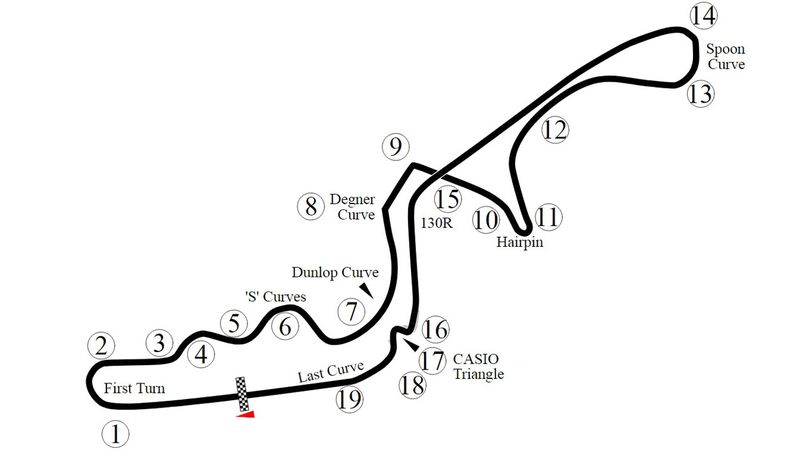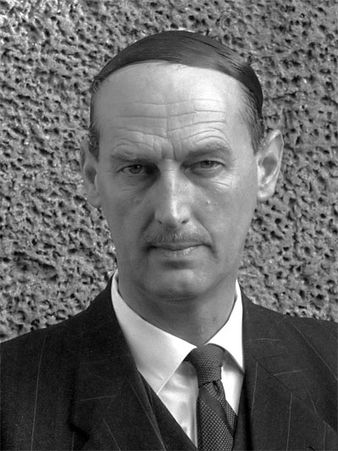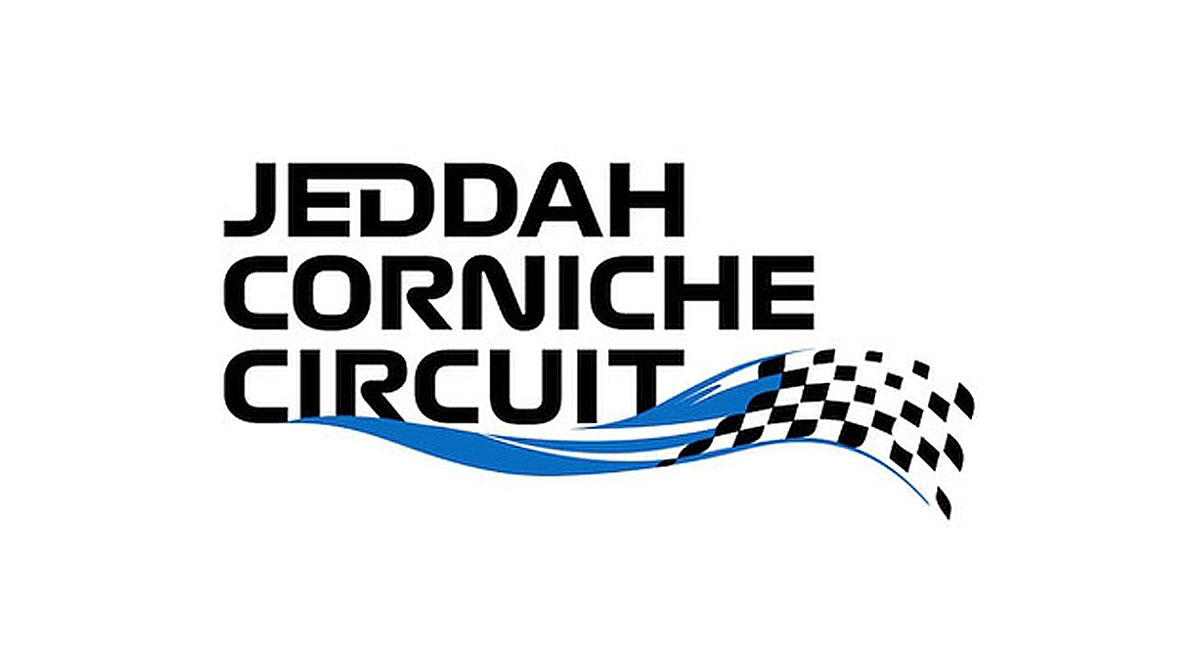The "Suzuka International Racing Course" (Suzuka Circuit) is a renowned racetrack designed for both car and motorcycle racing, and it proudly hosts the Japanese Grand Prix Formula 1 event. Situated in Japan city Suzuka, Mie Prefecture, this racetrack was initially constructed for testing Honda cars, and the entire infrastructure is owned by the Honda company. Its reputation is built on its high-speed features and distinctive figure-eight layout, making it a favorite destination for racing enthusiasts not only in East Asia but also from all corners of the globe.

Characteristics
- Seating capacity: 100,000 spectators
- FIA Grade: Grade 1 license
- Architect: John Hugenholtz
- Configuration: 5,807 meters long with 18 turns (in some layouts, 21 turns)

Main competitions held at Suzuka Circuit include:
- Japanese Grand Prix - Formula 1
- D1 GP
- Formula Nippon (Super Formula) stage
- Super GT stage
- Blancpain GT stage
- Moto GT motorcycle championship stage
Description
The 5,807-meter-long racetrack of Suzuka Circuit is considered one of the most challenging and exciting stages in any racing championship. Fans, drivers and team representatives acknowledge this fact. This racetrack hosted the first Japanese GP in F1 history and numerous other competitions.

History of Creation
In the mid-20th century, Japanese automobile and motorcycle manufacturing companies experienced dynamic growth. Honda decided to build a modern racetrack for testing purposes and approached Dutch architect John Hugenholtz for the project.

The new original track, featuring a bridge and many interesting turns, was opened in 1961. The first Formula 1 stage was held in 1963, but it was not part of the Championship. In 1987, Suzuka hosted an official GP that became part of the F1 Championship.
The race quickly captured significant attention due to its captivating profile, offering ample opportunities for exciting and dynamic maneuvers. Spectators in the stands enjoyed excellent views of the action, and the ever-changing weather conditions added an extra element of excitement to the races. Traditionally scheduled late in the calendar, this race often plays a crucial role in determining the championship outcome. With the exception of 2007 and 2008, when it took place at "Fuji Speedway," Suzuka has been an indispensable part of the F1 Championship.
Architecture
Among major racetracks, Suzuka has the most interesting architectural design with its figure-eight layout, featuring a bridge and a multitude of high-speed turns. Its popularity is attributed to the high speeds, challenging corners, and track length. The track's configuration has only changed slightly four times, with the last modification occurring in 2003 after a serious accident involving Allan McNish. The average speed of F1 cars during races reaches 229 km/h, putting Suzuka on par with iconic circuits like Silverstone and Circuit of Spa-Francorchamps.

In 2004, Schumacher set the fastest lap in qualifying mode with an average speed of 235 km/h, which remains unmatched to this day. Despite the high speeds, Suzuka (one of the oldest active racetracks) has narrow safety zones.
The R130 and Degner turns require F1 drivers to pass at speeds of up to 300 km/h, just a few meters from the barriers. Most turns on the track are high-speed, but there are also slower corners.
- R200 is taken at maximum speed.
- R130 is approached at speeds around 300 km/h.
- Dunlop and Spoon turns are taken at 200 km/h.
- The S-shaped combination is taken at speeds ranging from 270 to 160 km/h.
- Hairpin and Casio are the slowest corners, taken at 60 km/h.
Infrastructure
The track's owner, Honda Motor Co., Ltd., has taken care of providing entertainment for motorsport enthusiasts. Adjacent to the racetrack is a vast amusement park with a visible Ferris wheel from any point. Visitors can enjoy tennis, golf, and bowling. There is a museum dedicated to Honda's history and present, offering unique car and motorcycle attractions for visitors. For those looking to relax, there are thermal springs in specially designed ponds. The track also offers track days, allowing speed enthusiasts to test their own vehicles.

Major Competitions
Formula 1: The Japanese GP, a highly significant event in the F1 World Championship, is held at the iconic Suzuka International Racing Course. Scheduled usually in October, it marks one of the season's final races. The track's demanding and high-speed turns have played a crucial role in determining the outcome of numerous championship battles. Michael Schumacher holds the record for the most victories at this track, with an impressive six wins. Throughout the history of the Japanese Grand Prix at Suzuka, Ferrari and McLaren have emerged as the most successful teams.

Pokka GT Summer Special: The second most popular endurance race at Suzuka is the "1000 km Suzuka," part of the national GT championship. It has been held since 1966. In 2009, the classic 1000 km distance was reduced to 700 km to accommodate more participants while reducing costs. Japanese driver Kunimitsu Takahashi has been the most successful in this race, winning it four times in 1973, 1984, 1985, and 1989.
Overall, Suzuka International Racing Course stands out as a challenging and iconic racetrack, attracting motorsport enthusiasts from all over the world.
SUPER FORMULA
The racetrack regularly hosts a stage of the racing championship formerly known as Formula Nippon, renamed in 2013 as the Super Formula series. The competition involves open-wheel cars with similar characteristics to Formula 3000 cars. One unique feature of this series is the ability for teams to further develop their engines, creating a competitive environment. The chassis for the cars is supplied by the company "Lola," and the engines are provided by renowned manufacturers worldwide, such as Honda and Toyota. Notable Formula 1 drivers like Eddie Irvine, Ralf Schumacher, and Pedro de la Rosa have started their careers in this series.

Super GT
The Super GT series is supported by the Japan Automobile Federation. It features prototype cars with GT bodies and engines producing 300 or 500 horsepower. The race is run in a single race format, but cars of different versions compete in separate rankings. This series is known for its inclusivity, as it allows both high-end sports car models and modified popular-class vehicles to participate.

MOTO GP
The racetrack also hosts races from the Moto GT championship, which attracts significant attention in Japan, where motorcycle racing is extremely popular. World-renowned manufacturers from the Land of the Rising Sun, such as Honda, Suzuki, Yamaha, and others, participate in this series.

FAMOUS F1 RACES
Formula 1 drivers traditionally consider Suzuka the most interesting stage, requiring skill, high expertise, and a bit of luck. The demanding requirements on car balance and tires are closely tied to the professionalism of the team's engineers and drivers. Each race at Suzuka is an exciting event filled with risky overtakes and interesting pit-stop tactics.
Suzuka has witnessed some remarkable moments in Formula 1 history. Ayrton Senna achieved victories twice at Suzuka – in 1988 with McLaren-Honda and in 1993 with McLaren-Ford, showcasing his exceptional driving skills. In 2000, a thrilling race unfolded with fierce competition between Michael Schumacher, driving for Ferrari, and Mika Hakkinen. Schumacher emerged victorious, thanks to a strategic pit-stop and masterful driving.
The 2005 championship race was memorable for Kimi Raikkonen's remarkable win from the 17th starting position. He engaged in a dynamic battle with his teammate Juan Pablo Montoya, eventually claiming victory. One of the race's most unforgettable moments was Raikkonen's brilliant overtaking maneuver against Michael Schumacher in the classic R130 turn at a breathtaking speed exceeding 300 km/h.

Tragically, the race in October 2014 witnessed the first fatal accident in 20 years when Jules Bianchi collided with an evacuation vehicle. This unfortunate incident served as a somber reminder of the risks involved in motorsport and led to increased safety measures.

Today, Suzuka continues to host various competitions, remaining a mecca for motorsport enthusiasts from all over the world. The combination of traditional old-school racetrack charm with modern safety and communication systems makes Suzuka the most memorable among similar facilities.



